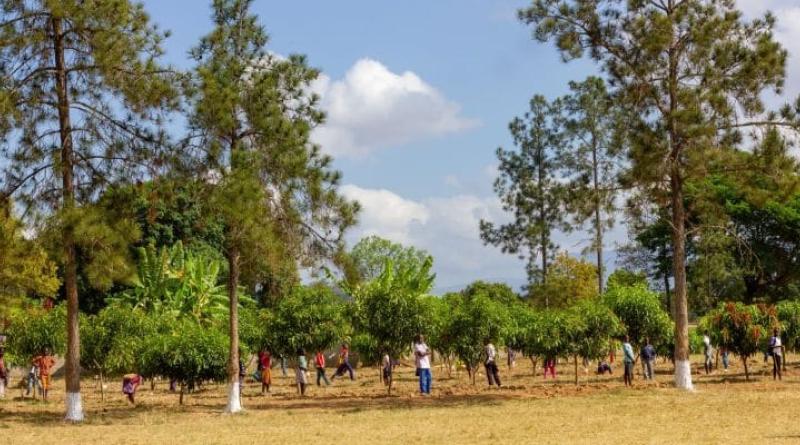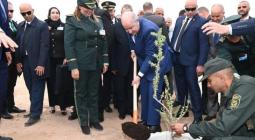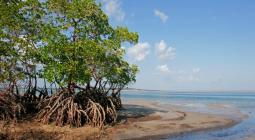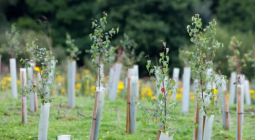AFRICA: where are we with reforestation as a solution to climate change?

With a population of 1.4 billion inhabitants, and an area of more than 30 million km2 as well as a coverage of 6% of the earth's surface, Africa is the region most vulnerable to climate change. Extreme weather events degrade soils and accelerate desert encroachment, with 319 million hectares at risk of desertification according to the Food and Agriculture Organization of the United Nations (FAO). To stem the phenomenon, governments, businesses and civil society are setting up a battery of reforestation projects. But then, does planting trees really help fight global warming?
In Africa, land degradation affects 74% of people in poverty. This consequence of climate change also causes the annual loss of 12 million hectares of land as a result of desertification, the equivalent of 23 hectares per minute. The Food and Agriculture Organization of the United Nations (FAO), which publishes this data, adds that 319 million hectares of land are threatened with desertification on the continent. It should also be remembered that Africa is home to the largest hot desert located in its northern part. The Sahara covers 8.5 million km2 , or 30% of the continent's total surface area.
From then on, all means are deployed to cope with the advance of desertification, and in turn, fight against the effects of climate change. Reforestation appears to be one of the most requested solutions. According to experts, planting trees generally protects the soil and helps it conserve its water sustainably. It is not just the soil that will benefit from the benefits of the vegetation, livestock will also benefit from the grasses that would result from this vegetation. Also and above all, studies show that photosynthesis carried out by tree leaves makes it possible to store atmospheric CO 2 , thus contributing to the reduction of greenhouse gases (GHG) in the atmosphere.
Senegal plants 20 million trees in one year
To combat climate change and its various corollaries such as deforestation, desertification and others, African states are implementing reforestation plans. And Senegal is one of the good students in this area. In September 2020, the West African country launched a new special reforestation operation that saw nearly 20 million trees planted across the country. The operation consisted of making available to rural populations, free of charge, baobab plants or caïlcedrats which are more resistant to poor soils. It was then up to the residents to take care of it. This operation contributed to reducing the number of hectares of forest lost each year, from 80,000 to 40,000 hectares in less than ten years.
In Africa, there is above all the Great Green Wall (GGV) initiative, which is at the center of all attention. Launched in 2007 by the African Union (AU), the project initially aimed at the continued planting of million trees on a 15 km wide strip from Senegal to Djibouti. But only 4% of the target planned for 2030 has been achieved, or 4 million hectares of developed land out of the 100 million hectares.
A delay partly caused by insecurity problems encountered in many countries in the Sahel, the initial project area. According to Elvis Paul Tangem, the GGW project coordinator for the AU, it is almost impossible to continue planting trees and restoring degraded lands in Mali, Burkina Faso, Niger, Chad, Nigeria, Eritrea and northern Cameroon due to insecurity and the reallocation of funds to humanitarian aid. To get around this obstacle, the AU decided in February 2023 to extend the Great Green Wall project to southern Africa.
Alongside the GGW, the initiative for the restoration of African forest landscapes ( AFR100 ) is also one of the major reforestation projects in Africa. Launched in 2015 by several African countries, AFR100 is a pan-African effort led at national level and whose objective is to restore 100 million hectares (or 1 million km 2 ) of deforested and degraded landscapes by to 2030. To date, the initiative has been joined by 34 countries, which have promised to make available 130 million hectares of land which will be restored by 2030. These include, for example, Togo, Ghana and Zimbabwe.
Reforestation, one decarbonization solution among others
The use of reforestation as a solution to climate change is not exclusive to Africa. It is also fashionable in the rest of the world. Several multinationals use it to offset their carbon footprint. But in recent years, studies have shown that planting trees is far from being the solution to global warming.
In one of his publications on the issue, the French scientific journalist Clément Fournier notes that today, human activities emit around 55 billion tonnes of CO 2 per year, while the floristic capacity to absorb this CO 2 are only a dozen billion tonnes per year. This means that humans emit 40 to 45 billion tonnes of excess CO 2 . To achieve carbon neutrality, 1500 billion trees would have to be planted. In terms of surface area, this would be more or less equivalent to a billion hectares of forests to be planted, or the surface area of the United States of America, or that of China.
However, this level of reforestation is not achievable. A significant part of the earth's surface is made up of ecosystems where trees grow little or poorly. These include savannahs, tundras, fruit bushes, permanent meadows or even mountain areas, coastlines, and desert areas. To this must be added spaces devoted to human activities, such as agriculture, infrastructure and housing.
Taking these parameters into account should not, however, lead us to believe that reforestation actions will remain sterile in the face of the climate crisis. Planting trees is just one solution among many, including energy efficiency, the transition to renewable energies, the decarbonization of industries and transport through the use of green electricity and bio- fuels. It is in this synergy of solutions that reforestation can effectively contribute to mitigating the warming of the temperature on the surface of the planet.






